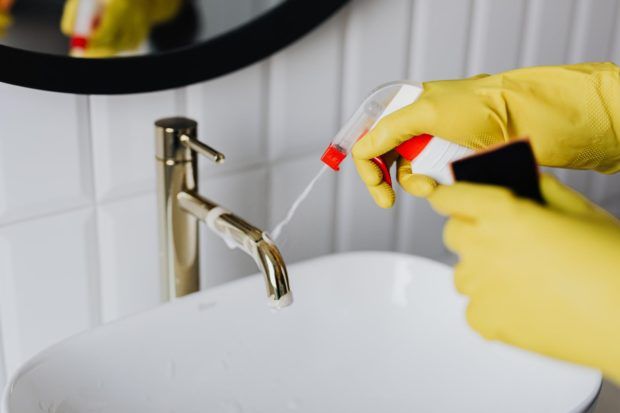Advertisement
The 10 Most Common Household Allergens

The term “allergy” was first used in 1906, referring to the immune system’s hypersensitivity to typically harmless substances. Common diseases for the umbrella term allergy include hay fever, food allergies, atopic dermatitis, allergic asthma, and anaphylaxis. Symptoms can range from irritated or watering eyes, nose, or throat, blisters, rashes, Hives, and in more severe cases, shortness of breath or hazardous swelling. As more than 50 million Americans experience some form of allergic reaction each year, inform yourself of the most common allergens.
Grass & Tree Pollen
Hay fever is the commonplace term for an individual’s allergy to grass or tree pollen. It is also called allergic rhinitis.
Grasses and tree pollen that cause the most allergic reactions are:
Alder
Ash
Beech
Birch
Box Elder
Cedar
Cottonwood
Date Palm
Dust Mites
Generally observed in humid environments, specifically in bedding and carpeting, dust mites are microscopic insects that feed on dead skin cells. Of the 20 million Americans suffering from dust mite infestations, household members may suffer from itchy eyes, a stuffy nose, postnasal drip, and sneezing. Left untreated, mites may assist in spreading sinus infections.
Animal Dander
Ironically, when most people claim they are allergic to pets, they are not, in fact, allergic to their hair or fur. Instead, they are allergic to the pet’s dander, the dead skin shed daily by our furry friends. That said, contact with an animal’s skin, saliva, or urine may induce a reaction.
Various Foods
Interestingly, the cause of food allergies is unknown. Still, most allergies experienced throughout childhood will dissipate by the time an individual reaches adulthood. However, those with peanuts, fish, shellfish, and tree nuts allergies will have an intolerance for life.
The most common food allergies are:
Soybeans
Peanuts
Milk
Wheat
Eggs
Fish – Bass & Cod
Shellfish – Crab, Lobster, & Shrimp
Tree Nuts – Almonds, Walnuts, & Pecans
Insect Bites & Stings
Insect bites may come from mosquitoes, bedbugs, fleas, and certain species of flies. Bites may induce pain, redness, itching, and possible swelling. Thankfully, insect bites are typically non-life-threatening.
Insect stings on the other hand will arrive via stingers from bees, wasps, and hornets. Stings are often worse than bites because venom, a toxic substance, is released when the skin is punctured. Left untreated in vulnerable populations can lead to the triggering of a life-threatening allergic reaction.
Medications
With medication-based allergies, the body will often mistake drug ingredients for harmful bacteria or viral infections. The medium in which the drug is delivered: liquid, pill, or injected, makes no difference to the body’s response.
Common Drug Allergy Triggers include:
Penicillin and similar antibiotics
Insulin
Anticonvulsants
Aspiring, Ibuprofen, and other NSAIDs (nonsteroidal anti-inflammatory drugs)
Chemotherapy drugs
Latex
An allergy to Latex revolves around the body’s abnormal reaction to certain proteins in rubber latex. Recognized products that contain latex are rubber bands, balloons, and (latex) gloves. Mild symptoms involve itching, skin redness, or a rash/Hives.
Mold
Unsurprisingly, mold spores travel weightlessly between breeding ground and host. Difficulty breathing or a combination thereof with heavy bouts of coughing and wheezing are some of the worse conditions one may develop in the presence of mold. More mild symptoms range from an itchy nose, throat, or eyes to postnasal drip and watery eyes.
Household Cleaners
Regular use of household cleaners will certainly help cleanse the home of common allergens. Consequently, some of the more acidic and basic ingredients in a wide range of cleaning products may be allergen triggers themselves. Further, if the ingredients are not responsible for an authentic allergic reaction, they can imitate or worsen existing symptoms.
The following are ingredients in common household cleaners that can worsen allergies:
Ammonia – can be labeled as ammonium hydroxide. Found in many toilet and window cleaners. Known for its ability to cut through grease and disinfect.
Bleach – A staple ingredient in a variety of cleaners. Bleach is typically found in stain removers in addition to bathroom and toilet cleaners.
Formaldehyde – A preservative and disinfectant. Can be found in dishwasher soap and wood cleaner. The substance has also been named by the U.S. National Toxicology Program as a known carcinogen.
Sodium Laureth Sulfate – Typically responsible for the foaming action of various soaps.
D-limonene – Often associated with citrus-based smells (lemon, lime, orange) in cleaning products.
Triclosan – The antimicrobial chemical was banned in 2016 by the F.D.A. but is still found in specific toothpaste, detergents, and hand sanitizers.
Cosmetic & Personal Care Products
The F.D.A. places the common allergens of cosmetic and personal care products into five classes:
Natural Rubber – Latex, in other words.
Fragrances – Although the following fragrances may not be listed on US-based products, the European Union Cosmetics Directive has deemed these ingredients to be allergens: Benzyl alcohol, Citral, Coumarin, Eugenol, Hydroxycitronellal, Lilal, Oak and Tree moss extract.
Preservatives – Methylisothiazolinone (MIT), Methylchloroisothiazolinone (CMIT), and formaldehyde-releasing agents like Biazolidinyl urea and Sodium hydroxymethylglycinate.
Dyes (& Color Additives) – Namely p-phenylenediamine (PPD) and Coal-tar. Notable in hair dyes and black henna tattoos.
Metals – Nickel and Gold.
















